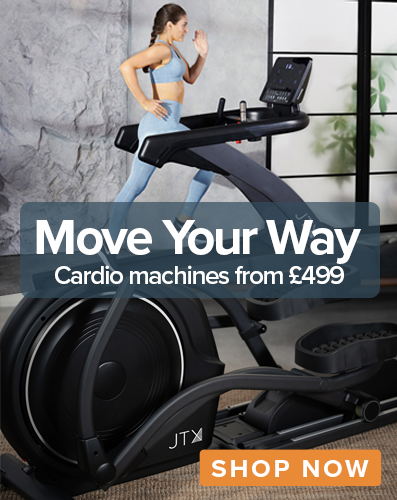Gym Equipment Maintenance Checklist
Regular maintenance is a smart way to prolong the life of your machine. And it’s easy, once you know how! Our super simple gym equipment maintenance checklist gives you top tips to get you started.
For most machines, all you need to do is complete four simple tasks, regularly. Wipe down, vacuum, lubricate, and tighten bolts. Read on to find out more.
1) Wipe Down
When you work out hard, you’re bound to sweat. This sweat can drip down onto the frame of your gym equipment. And, over time, sweat can cause the frame to corrode. This is particularly true on indoor training bikes.
All machines need a regular wipe down, to keep them in top working order. Wipe your machine down after each workout with a non-corrosive, alcohol-free cleaner. Antibacterial wipes are a smart choice. Or a weak alkaline cleaner and soft cloth.
Here’s a quick video guide to the key parts of an indoor training bike that need wiping down:
2) Vacuum
If you own a treadmill, vacuuming around and underneath it is important. Dust and dirt can get under the motor cover and affect performance.
Keeping your treadmill dust and dirt free will ensure the motor keeps running smoothly. So, don’t forget to include your treadmill next time you’re doing the rounds with the vacuum cleaner.
3) Lubricate
Lubricant helps chains, pedals, brake pads and belts on fitness equipment to run smoothly. Let’s explore what you need to lubricate, and how often, depending on what machine you have:
Treadmills
How often lubrication should be applied depends on usage, we recommend the following:
- Light use (less than 3 hours a week) - lubricate every 8 months
- Medium use (3 to 5 hours a week) - lubricate every 4 months
- Heavy user (more than 5 hours a week) - lubricate every 2 months
To check for sufficient lubrication levels, disconnect the treadmill from the power supply. Put your hand underneath the mat and feel along the running deck, as close to the centre of the deck as you can. If your hand gets a light coating of lubricant, then no further lubrication is required.
If the surface feels dry and your hand feels clean, then apply more lubricant in the central area of the running belt. Re-apply 15ml or 20ml of lubricant as required.
Be careful not to over-lubricate the belt. Add a little lubricant at a time, reconnect power to the treadmill and walk it for at least 15 to 20 minutes and then re-check. Repeat the process if necessary, until the desired result is achieved.
Note: With a folding treadmill, we recommend that it is not folded immediately after applying silicon lubricant. The treadmill will need to be used for at least 15 to 20 minutes to ensure the silicon lubricant is evenly spread and fully absorbed into the running belt before folding.
This video guides you through the treadmill belt lubrication process:
Rowing machines
Rowing machines often have a chain attached to the handles. This needs regular lubrication to keep the rowing motion smooth. To do this, you can use normal bike chain oil.
Indoor Training Bikes
Indoor training bikes also need regular lubrication in two places. Firstly, the pedals need lubricating 6 - 12 months to keep them spinning smoothly.
Our next video shows you how to lubricate your indoor bike pedals:
If your indoor bike has leather brake pads, these need lubricating too. After a while, without lubrication, the brake pad can stick, making it hard to pedal.
Keeping your brake pads lubricated every 6 - 12 months will ensure a smooth cycle, with consistent resistance. Please note, if you have a bike with felt brake pads (like the JTX Cyclo 3), these should not be lubricated.
This video shows you how to lubricate leather break pads:
4) Tighten Bolts
Most pieces of gym equipment have multiple moving parts. Often these are kept in place by bolts. Giving those bolts a quick tighten on a regular basis is important, as they can work loose over time.
Cross Trainers
This maintenance tip is particularly important if you own a cross trainer. With multiple planes of motion, keeping bolts tightened is key.
Tight bolts ensure a smooth, quiet stride and arm motion. If you can hear clunks and clicks, loose bolts are often the cause.
This video shows you key places on a cross trainer where you might need to tighten bolts:
Exercise Bikes
If you own an exercise bike, keeping the bolts on the seat adjuster tight is important. This will keep your seat secure, ensuring a stable ride, day in day out.
This video guides you through the exercise bike bolt tightening process:
Takeaway
Regular maintenance keeps your machine running smoothly and prolongs its life. Maintenance isn’t too much of a chore, if you do the most crucial tasks regularly.
Remember our quick gym equipment maintenance checklist: wipe down, vacuum, lubricate, tighten bolts. Do these four key tasks at regular intervals, and your machine will be in tip top condition.
For more maintenance tips, check our fitness equipment maintenance, servicing and repairs guide.





